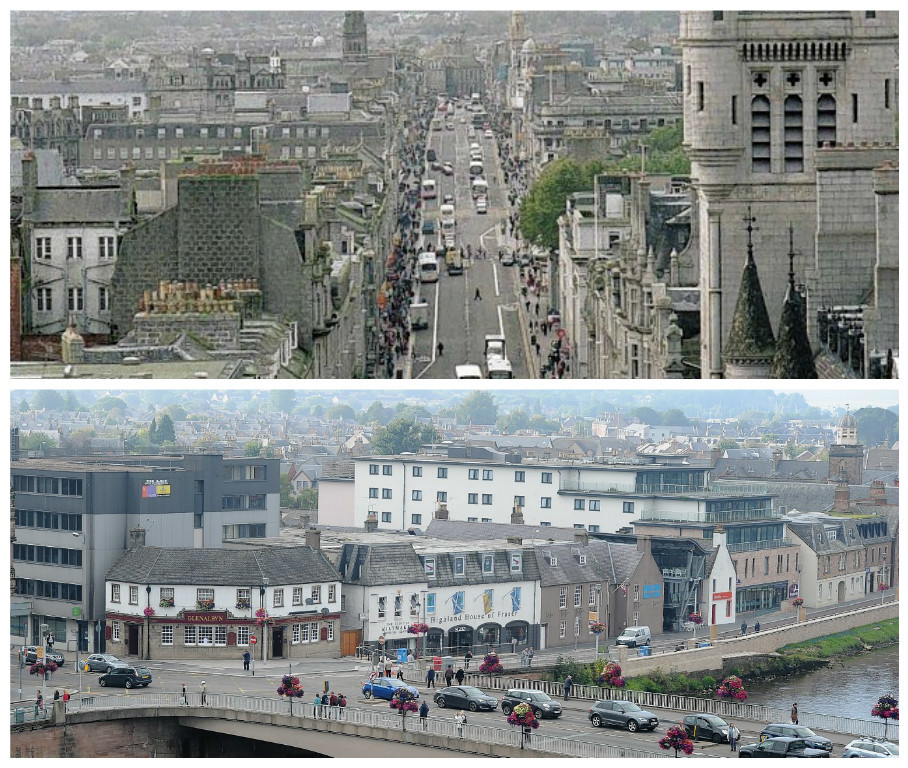As the Press and Journal’s week-long series on the state of our high streets continues, Lindsay Watling finds out whether Aberdeen and Inverness could learn lessons from successful regeneration schemes south of the border.
Leading from the front, taking residents with you and not selling off the family silver.
Those were the key ingredients for breathing new life into town and city centres, according to the deputy leader of Reading Borough Council.
Councillor Tony Page, who has served for 40 years without break, says much of the redevelopment in recent times followed on from one big project, the catalyst Oracle development in 1997.
Property developer Hammerson – owner of Aberdeen’s Union Square shopping centre – acquired a 22-acre site of largely derelict and undeveloped land previously occupied by a brewery and bus depot.
In a series of stages, it was transformed into shopping malls, riverside restaurants, pubs and a cinema.
Once the first phase was completed, Debenhams department store was relocated into the centre, which in turn allowed for the redevelopment of its old site, on Broad Street, the main pedestrianised thoroughfare.
It was connected into the scheme by a bridge, thereby invigorating the high street, and a replacement bus depot was also built close to the town centre.
The Oracle, opened by the Princess Royal in 2000, immediately lifted Reading into the top ten retail destinations in the UK.
“That’s probably the single most important regeneration project. That set the tone for a lot of other sites nearby,” Mr Page said.
More recently, Reading railway station and the surrounding area has undergone a makeover.
Network Rail has rebuilt the station, which is one of the busiest rail hubs in Britain and is used by nearly 20 million passengers a year. It has also upgraded the railway in the area to remove a former bottleneck.
Work started in 2011 and the station was officially opened by the Queen in July last year, with the track work completed this summer.
Mr Page, who is the lead member for strategic environment, planning and transport, says the local authority was keen to capture the benefits of the renovation.
It has been working with private firms to ensure development in the adjoining areas – a mix of office, residential and retail – is delivered on a sustainable basis.
He emphasised the importance of the council being in a position to give leadership when the investment arrived.
“Obviously plans have to be modified, they don’t always materialise in the way that is originally intended, but certainly setting the direction and being able to give a clear set of ideals is something developers want and welcome,” he added.
Sue Brackley, economic development manager of arm’s-length body Reading UK CIC, called it “having the courage” to think ahead about what will encourage further investment in the area and in turn bring in more visitors.
She said: “As things are happening, we are getting an awful lot of international investment coming in.
“It’s almost like if you build, they will come.”
The cost of the project was covered by the private sector but crucially the council owned a third of the key land involved.
Rather than selling, the local authority opted to lease it, which means it still receives an income and has an ongoing interest.
“We could have sold the land and indeed I think at one stage the developers were keener for us to, but wherever possible don’t sell the land because it’s the family silver,” said Mr Page when asked about the lessons he had learned over the years.
It gives a council leverage, he explains, and allows it to borrow against the leased value.
The Labour politician also attached great significance to working in cooperation, having a clear idea where you want to end up and providing a framework for the process.
He said: “It’s important there is a vision so that the council can provide leadership and vision for the way they want to see the community developing. The council needs to take the lead.”
But he also highlighted the value of consultation in getting everyone – big business, public sector organisations and the community – on board.
Ms Brackley agreed it is always critical to work out and then demonstrate how a new development will be better for everyone.
She said it was a case of explaining that you are keeping the heart of the town centre the same, just improving the facilities.
And she underlined the importance of challenging perceptions that outsiders – and some residents – might have about a place.
